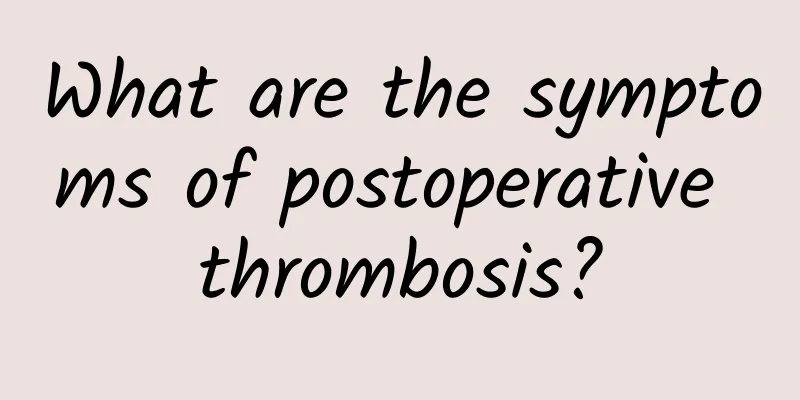Yellow discharge after menstruation

|
Menstruation is something that makes many women feel very embarrassed, because sometimes menstruation comes when they are caught off guard, which may stain their clothes. Sometimes menstruation makes people feel uncomfortable during the days. Some people may have more severe abdominal pain, which causes many female friends to feel troubled by menstruation. In fact, menstruation can sometimes reflect people's physical health. People don't need to worry too much about menstruation. For example, some people have yellow discharge after menstruation, which also reflects their physical condition. Endometritis is an inflammatory change in the endometrial structure caused by various reasons. Bacteria can ascend along the vagina and cervix or descend along the fallopian tubes and reach the endometrium through the lymphatic system. Normally, the uterine cavity has good drainage conditions and periodic endometrial exfoliation, so inflammation rarely has a chance to stay in the endometrium for a long time. However, if the acute inflammation is not treated thoroughly, or there is often an infection source, the inflammation may recur. In severe cases, it may affect the myometrium and become myometritis. Endometritis can be divided into acute endometritis and chronic endometritis. Chronic endometritis often coexists with chronic cervicitis and chronic salpingitis and is the most common cause of miscarriage. Causes of Endometritis Acute endometritis mainly occurs after childbirth, abortion or uterine surgery, especially informal artificial abortion, and can also be caused by sexually transmitted diseases. The pathogens include Escherichia coli, Staphylococcus, Streptococcus, as well as gonococci and mycoplasma. Endometritis is caused by bacteria that migrate up the vagina and cervix or down the fallopian tubes and through the lymphatic system to the endometrium. Most of them are caused by ascending from the vagina and cervix. In addition, not paying attention to personal hygiene, having sexual intercourse during menstruation, and having heterosexual intercourse with people with sexually transmitted diseases can also easily lead to this disease. Elderly women are prone to senile vaginitis due to the decrease of estrogen in the body, the decrease of acidity in the vagina, and the reduction of cervical mucus plug, which can further develop into endometritis. In severe cases, endometrial adhesions can cause infertility. Treatment 1. General management (1) Intravenous nutrition and water supplementation can be given, and attention should be paid to correcting electrolyte imbalance and acidosis; (2) Acute endometritis should be treated by bed rest, preferably in a semi-recumbent position, to facilitate the limitation of inflammation and drainage of uterine secretions; (3) Apply hot compresses to the lower abdomen to promote absorption of inflammation and relieve pain; (4) Maintain smooth bowel movements to reduce pelvic congestion and facilitate toxin excretion; (5) Physical cooling can be used in case of high fever; (6) Excessive gynecological examinations should be avoided to prevent the spread of inflammation. 2. Drug treatment (1) Antibiotic treatment is mainly based on antibiotic treatment. The principles of antibiotic treatment are: empirical, broad-spectrum, timely and individualized. The antibiotics selected should cover all possible pathogens, or antibiotic treatment should be selected based on the results of pathogen culture and drug sensitivity. (2) Intrauterine drug administration: For married patients, intrauterine drug administration can be used. Before the operation, the size and position of the uterus should be determined by bimanual examination. After the vulva and vagina are disinfected and the depth of the uterine cavity is detected, a sterile urinary catheter is inserted from the cervical os into the uterine cavity. The depth should be less than 0.5 cm. The selected drug is slowly injected into the uterine cavity through the urinary catheter. After all the drug liquid has entered the uterine cavity, the urinary catheter is removed and the patient should lie flat or in bed with the hips elevated for 1 to 2 hours. This method is repeated once a day and is discontinued during menstruation. Since this method can make the drug act directly on the lesion, it is often effective. (3) Cleaning the uterine cavity: If endometritis occurs after delivery or abortion, if there is suspected placental tissue residue, it should be removed immediately while using antibiotics. When the antibiotics reach a certain dose and the inflammation is under control, curettage can be performed to prevent the spread of inflammation. If there is active uterine bleeding, the uterine cavity can be cleaned with the application of large amounts of antibiotics. |
<<: Yellow discharge on the second day after menstruation
>>: Nose is clear but there is phlegm on the palate
Recommend
My hand hurts after falling. What should I do?
In daily life, we often encounter many bumps and ...
What are the causes of glassy shadows in the lungs?
The human lungs are very fragile and easily affec...
What are the traditional Chinese medicines for weight loss and detoxification?
Everyone loves beauty, and both women and men hav...
The process of detoxification by taking Chinese medicine for eczema
For recurring eczema, Chinese medicine can be use...
What is the disease that causes black spots under the fingernails?
Fingernails all look pink. Of course, the color o...
What to do if your nose is allergic to air conditioning?
In summer, the human body is most likely to suffe...
What are the Chinese patent medicines for children?
Anti-inflammatory drugs are applicable to a wide ...
Is it serious if the phlegm of a cold is green?
It is easy to have a lot of phlegm when you have ...
What to do about thick lips
The discomfort of thick lips is something we can ...
What happens if you inhale too much nitrogen?
Everyone knows that nitrogen is a colorless and o...
How often should I check the umbilical cord around the neck?
Many babies are very naughty when they are in the...
What are the symptoms of pulmonary mediastinal lymphadenopathy?
The most obvious symptom of enlarged mediastinal ...
Will a cold reduce milk supply?
The baby's immune system is not fully develop...
The difference between Poria cocos and Poria cocos
Poria cocos and Poria spirit are quite similar. I...
Difference between atopic dermatitis and eczema
Odor dermatitis and eczema are both common skin d...









